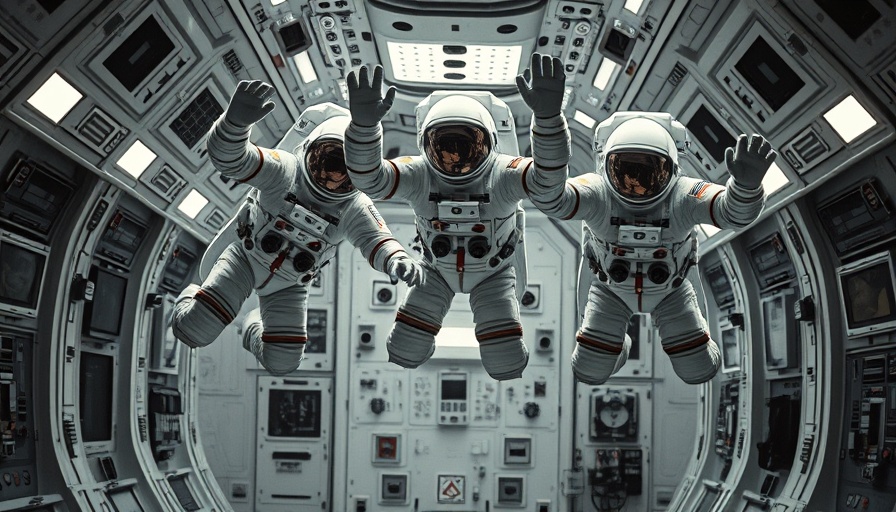
A Historic Collaboration in Space Exploration
In the annals of space exploration, few moments stand out as much as the meet-up between American astronaut Thomas Stafford and Soviet cosmonaut Alexei Alexeyevich on July 17, 1975. This handshake in orbit, part of the Apollo-Soyuz Test Project, was not just a groundbreaking achievement in itself; it symbolized a thawing of Cold War tensions and initiated cooperative ventures that eventually brought about the International Space Station (ISS). As Glynn Lunney, a pivotal figure in NASA during the Apollo era, noted, turning from a competitive rivalry to collaboration in space was monumental and hinted at what was to come for international space efforts.
The Cultural and Political Context of Space Exploration
During the 1970s, the United States and the Soviet Union were embroiled in a fierce rivalry, characterized by political tensions and a race for technological supremacy. The Apollo missions had already set the tone for American dominance in space—landing humans on the Moon by 1969 was a historic moment. However, the Apollo-Soyuz mission marked a significant pivot, suggesting that even during a period of strife, nations could find common ground. As Lunney expressed, he transitioned from perceiving the Soviet Union solely as a competitor to viewing them as potential partners. This recognition of shared human endeavor in space resonates with current events where collaboration often trumps competition.
Implementing Cooperation in Space
The Apollo-Soyuz Test Project was a meticulous endeavor that required years of preparation. Astronauts and cosmonauts traversed unparalleled technologies to ensure safety and compatibility. This venture laid the groundwork for future international partnerships, evolving into projects that would link various nations together in ongoing celestial research. It became a springboard for the NATO of space, with the ISS serving as a literal and figurative platform for international collaboration, housing astronauts from multiple countries, including the USA, Russia, Europe, Japan, and Canada.
Impact on Modern International Relations
Fast forward to today, space remains a prime frontier for global collaboration. The ISS is a testament to what countries can achieve when they unite their resources and intellect. With nations now racing to return to the Moon and establishing future colonies on Mars, the foundations of teamwork laid down during the Apollo-Soyuz mission are more relevant than ever. These efforts highlight the need for a cooperative spirit, especially when dealing with challenges such as climate change and resource allocation on Earth.
Future Predictions on Space Exploration
The cooperation seen with the ISS offers a blueprint for tackling looming global challenges. As humanity prepares for deeper space exploration—with plans for Artemis missions to return to the Moon and eventually Mars—alliances will be crucial. Countries are beginning to understand that working together can lead to enhanced technical innovations, safer missions, and accelerated scientific discoveries. Organizations like NASA and ESA are already showing that peace persists, even in the most competitive of arenas.
Common Misconceptions about Space Cooperation
It’s often assumed that space exploration is solely the domain of superpowers. While the U.S. and Russia have historically led the charge, nations like India and China are now making significant strides. As more countries develop their space programs, the old idea of exclusivity in space will change, encouraging afterthoughts of competition to evolve into collaborative strategies. Additionally, there’s a misconception that technologic advancement is singularly focused; countries involved in space exploration often share data and findings that foster mutual growth.
Lessons Learned from the Apollo-Soyuz Mission
The handshake in orbit wasn't just a moment of pleasant exchange but a living lesson on the importance of diplomacy, trust, and the overwhelming potential of joint efforts in times of strife. As we reflect on this pivotal era, understanding its significance could guide future generations toward smarter, more cooperative approaches to global issues—both on Earth and in space. The spirit of the Apollo-Soyuz project represents the best of what humanity can achieve when we emphasize unity.
The historical handshake continues to resonate in today’s world, reminding us that no matter how intense the rivalry may seem, a collaborative approach can yield boundary-breaking results for all of humankind. In our ongoing quest to explore the stars, let’s hold onto the lessons learned from those who came before us.
 Add Row
Add Row  Add
Add 




 Add Row
Add Row  Add
Add 

Write A Comment